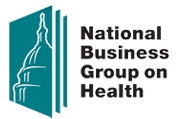The feds just announced health reimbursement arrangements (HRAs) are exempt from the annual limit restrictions in the healthcare reform law until Jan. 1, 2014.
Back in June, the Centers for Medicare & Medicaid Services (CMS) issued guidance that required HRA plans to renew or apply for a waiver by Sept. 22, 2011 if they wanted to be relieved from complying with the reform law’s restrictions on annual dollar limits.
But the Center for Consumer Information & Insurance Oversight has just issued new guidance rendering the CMS renewal/application process unnecessary.
It says HRAs have been deemed exempt from having to comply with the annual limit restrictions through 2013, as long as they comply with existing record retention and annual participant notice requirements.
Under the Patient Protection and Affordable Care Act (PPACA), group health plans need to start phasing out annual dollar limits on health benefits provided.
The reform law says plans cannot:
- impose limits lower than $750,000 for plan years beginning on or after Sept. 10, 2010
- impose limits lower than $1,250,000 for plan years beginning on or after September 23, 2011, and
- impost limits lower than $2,000,000 for plan years beginning on or after September 23, 2012.
By Jan 1, 2014, HRAs and health plans will not be allowed to impose any spending limits.
The CCIOO’s reasoning for allowing HRAs to be exempt from the limits until 2014: Requiring mini-med HRA plans to comply with the limits would likely result in a significant increase in mini-med premiums, which would cause many employers to drop coverage and leave workers without even minimal insurance coverage.
The new guidance also says any coverage that’s “integrated” with an HRA must meet the reform law’s annual limit requirements or obtain a waiver by Sept. 22, 2011.
However, no clear guidance was given as to when/how coverage is “integrated” with an HRA.
Click here for the original article and more information.







